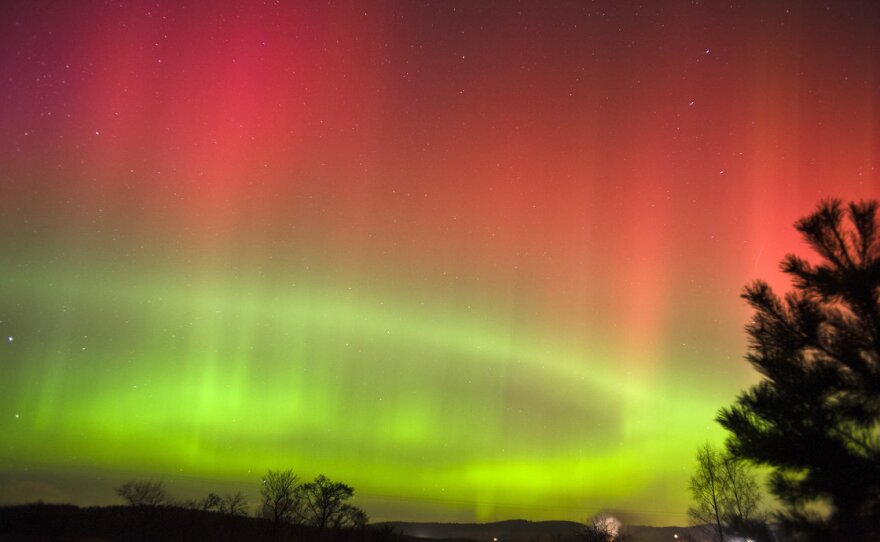The skies above the U.K. went crazy last night. Streaks of green and yellow layered themselves over the horizon, while swatches of red shimmered overhead. The intense Aurora Borealis was powered by the remnants of a strong solar flare that occurred earlier this week.
Britons who stayed up late last night were richly rewarded. The lights, which are normally only seen with real clarity in areas closer to the Earth's poles, were visible in even the southern U.K. Photos and reports of the Northern Lights came in from South Wales to Scotland, as well as Ireland.

"It is just good luck," says astronomer Mark Thompson of the BBC's Stargazing Live. "The last time I have seen it this spectacular was probably 20 years ago."
The light show was so bright and intense that some photographers found themselves with the wrong settings, resulting in slightly overexposed images. But they're spectacular, nonetheless.
According to the U.S. Space Weather Prediction Center, last night was the highlight of the current display.
Since Tuesday, "storming [on the sun] has subsided and the bulk of this geomagnetic disturbance is over," the agency says. But the SWPC also notes that more flares could come.
"Region 1990, the region responsible for this activity, continues to harbor some magnetic complexity and further eruptions are certainly possible," the agency says. "Stay tuned for updates."
NASA reminds us how the lights are formed:
"The typical 'Northern Lights,' or Aurora Borealis, are caused by collisions between fast-moving electrons and the oxygen and nitrogen in Earth's upper atmosphere. The electrons - which come from the magnetosphere, the region of space controlled by Earth's magnetic field - transfer energy to the oxygen and nitrogen gases, making them 'excited.' As they 'calm down' and return to their normal state, they emit photons, small bursts of energy in the form of light."
If you'd like a more detailed explanation drawing on recent research, NASA has that for you.






